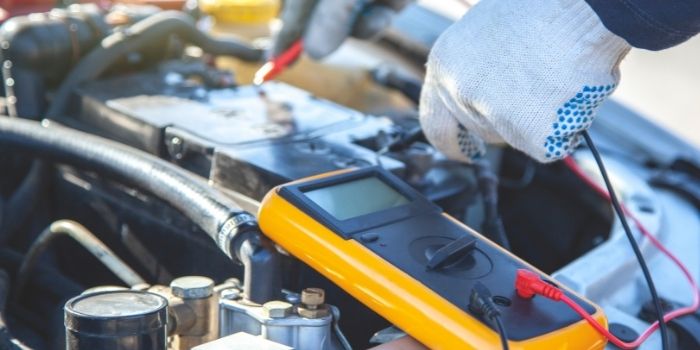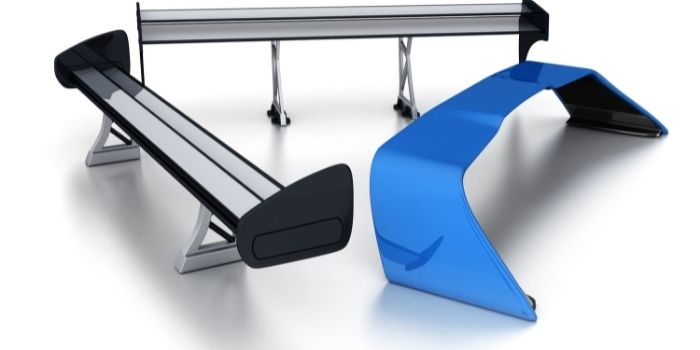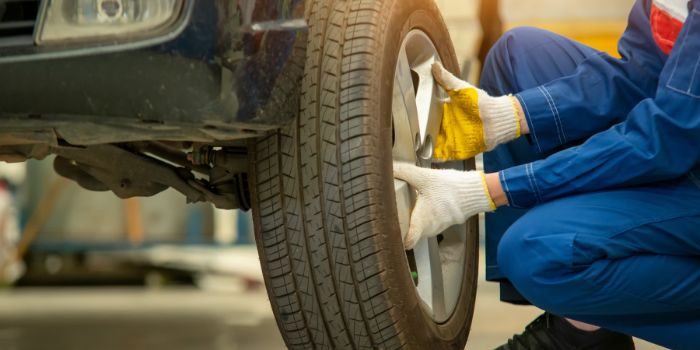
Transmission is one of the key components of a car responsible for transferring power from the engine to the wheels, which makes it possible for your car to move.
The vehicle’s transmission is a gearbox containing a set of gears. These gears are responsible for transferring power from the engine to the wheels.
It’s also connected to the clutch, which allows you to change gears. The clutch allows you to disengage the engine from the transmission so that you can change gears.
The transmission has two main types of gear. The input shaft gear is connected to the engine and spins at the same speed as the engine. Second, the output shaft gear, which is connected to the wheels and spins at a different speed than the engine.
Without a transmission, a car would be uncontrollable. The wheels would turn the same number of times with each crankshaft revolution, meaning that stopping would require turning off the engine. Such a vehicle’s performance would be poor and use more fuel than necessary.
A car’s transmission is vital because it determines how the engine’s revolutions per minute are used, improving performance. Additionally, you can put your car in neutral gear with a clutch mechanism that disconnects the engine from the driving wheels.
In short: a transmission is an essential and irreplaceable part of any vehicle. And as there are a few different types of car transmissions, let’s examine them and explain how they function.
Table of Contents
1. Manual Transmission
The manual transmission has been around since the very beginning of cars. In order to use it correctly, you have to press the clutch pedal with your left foot while using your right hand to shift gears.
You also have to keep an eye on the tachometer, so you don’t rev too high and damage the engine. It’s definitely a challenging process to learn, but once you get used to it, it can be quite fun!
Some drivers prefer manual transmissions because they like the analog feel, high level of driver engagement, and sense of control.
Although manual transmissions have slower shifting times and less performance, they are still preferred by some driving purists.
However, with technological improvements to automatic transmissions, manual transmissions are becoming less common.
2. Automatic Transmission
Automatic transmissions are controlled by the car’s computer. Its gearbox uses a complex system of hydraulics and sensors to change gears as the vehicle moves automatically.
These are most commonly found in passenger cars but are also used in commercial vehicles and heavy-duty trucks.
The advantage is that it frees up the driver’s hands, feet, and mind from operating the gearshift and clutch. They are also usually more reliable than manual ones.
The automatic transmission has been around since the 1940s and is now commonplace in most modern cars. The driver only needs to put the car into “D” for a drive, after which point the gearbox will automatically handle shifting gears.
This type of transmission is simpler to use because there is no clutch pedal– just brake and accelerator pedals.
Automatic gearboxes are considerably more intricate than their manual counterparts, especially modern transmissions with advanced electronic components.
Rather than the clutch found in a standard manual transmission, an automatic relies on a torque converter to shift gears smoothly and effortlessly. Autonomous advantages include reduced driver stress, improved fuel efficiency, and greater practicality overall.
Automatics are King right now because they have improved much, including the drastic shift from 2 or 3-speed units to 8 and 10-speed boxes. The more gears the transmission has, the less power is wasted, which makes for higher efficiency performance.
Furthermore, automatics can shift quicker than manuals making them much more desirable in spite of their former Reputation.
Most automatic transmissions come with a “manual mode” that permits drivers to shift gears according to their own preferences.
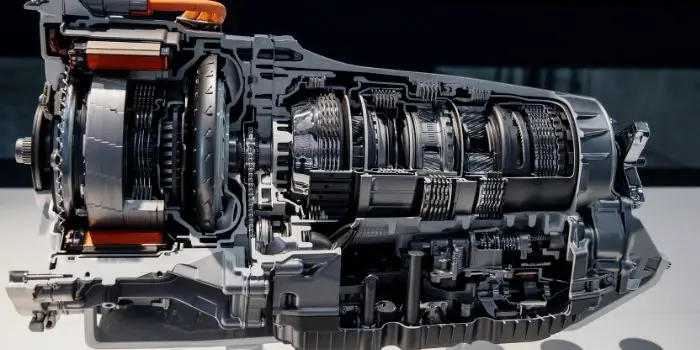
3. Semi-automatic Transmission
Over time, various companies have tried using hybrid manual and automatic gearboxes to create semi-automatic transmissions.
The concept was to merge a manual’s efficiency and management with an automatic’s convenience. Yet so far, these transmissions have met with limited success and are hardly ever used in regular cars nowadays.
A semi-automatic car usually has a clutch for starting the car, but after that, all of the gear changes are done automatically-without any input from the driver.
The other way to design a semi-automatic car is to make it clutchless (e.g., Porsche Sportmatic).
These cars started with automatic transmissions but then shifted to manual. Even though the concept sounds good in theory, semi-automatics are problematic and lack the performance or response of automatics or manuals.
4. Continuously Variable Transmission (CVT)
A continuously variable transmission, or CVT, is a type of automatic transmission that can change seamlessly through an infinite number of gear ratios.
Rather than using traditional fixed gears, a CVT uses two variable-diameter pulleys connected by a belt or chain.
The front pulley, called the drive pulley, is connected to the engine crankshaft, while the rear pulley, called the driven pulley, is connected to the driveshaft.
By varying the diameter of the pulleys, the CVT can change the gear ratio between the engine and the driveshaft, resulting in smoother, more efficient power delivery.
CVTs are often found in small vehicles like scooters and motorcycles, where their ability to optimize power delivery can help offset the lack of engine displacement.
However, CVTs are also used in some larger vehicles like SUVs and sedans.
In addition to offering improved fuel economy, CVTs often provide a smoother driving experience than traditional automatic transmissions.
5. Dual-clutch Transmission (DCT)
The dual-clutch transmission is a type of automatic transmission that uses two separate clutches to engage the gears.
One clutch is responsible for odd-numbered gears, while the other handles even-numbered gears.
This allows for smoother and faster gear changes, as well as increased fuel efficiency.
DCTs are often used in performance vehicles because they can provide quicker acceleration than a traditional automatic transmission.
However, DCTs can be more expensive to repair and maintain than a traditional automatic transmission, so they are not always the best choice for every driver.
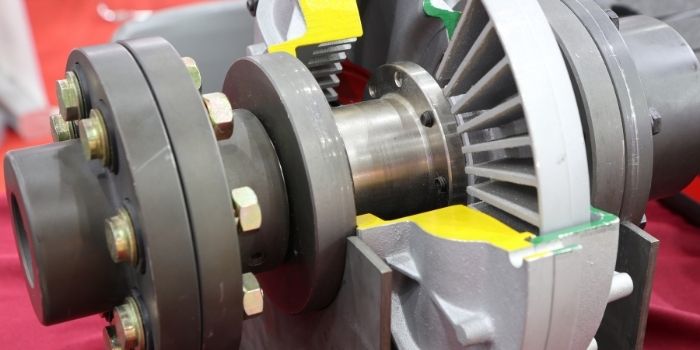
6. Sequential Transmission
In a sequential transmission, gears are selected in a pre-determined order.
For example, in a “4-speed” sequential gearbox, the driver would select 1st gear by moving the shift lever to the left and backward.
To select 2nd gear, they would move the shift lever to the left and forwards.
3rd gear would be selected by moving the shift lever to the right and backward, while 4th gear would be selected by moving the shift lever to the right and forwards.
This type of transmission is often used in racing cars as it allows for faster shifts since the next gear is already pre-selected.
It can also be used in construction equipment or other large vehicles where multiple gears are needed.
7. Torque Converter Transmission
A torque converter transmission is a type of automatic transmission that uses a torque converter to change gears.
A torque converter is a fluid coupling used to transfer rotating power from a prime mover, like an internal combustion engine, to a rotating driven load.
Torque converters usually consist of three main parts: the pump, the turbine, and the stator.
The pump is connected to the engine and drives the turbine, which is connected to the driven load.
The stator is connected to the pump and helps to deflect fluid as it flows between the pump and turbine.
As a result, less energy is lost in the form of heat, and more power is transmitted to the driven load.
8. Tiptronic Transmission
A Tiptronic transmission is an automatic transmission that allows the driver to select gears manually.
To shift gears, the driver presses a button on the shifter handle or steering wheel.
The system then electronically calculates the appropriate gear based on the vehicle’s speed and the engine rpm.
Once the gear has been selected, the system engages the clutch and shifts.
Tiptronic transmissions are available in both front-wheel drive and rear-wheel drive vehicles.
They are often found in sports and luxury vehicles but are becoming increasingly common in mainstream passenger cars.
Benefits of Tiptronic transmissions include improved fuel economy and performance and greater driver control and satisfaction.
Drawbacks include increased complexity and cost, as well as reduced reliability.
Final Thoughts
As we have seen, there are different transmission systems used in vehicles.
If you ask me which one is better, there isn’t a definitive answer to this question – as it depends on your personal preferences and driving style.
A manual transmission or a CVT will be the best option if you want fuel efficiency and more control over the car.
However, an automatic transmission would be the better option if you value ease of use.
Remember that there are many potential causes of transmission problems, such as leaks, sensors, or electrical issues.
If you are experiencing transmission problems, it is best to take your car to a mechanic for diagnosis and repair. The cost of replacing a transmission can vary depending on your car type and the damage’s severity.
Ultimately, it is up to you to decide which type of transmission is best for you.

Based in Orem (Utah) John Paterson graduated from Utah Valley University and has begun writing in 2009. He has a large wealth of experience in writing articles related to cars, automotive repair, wheels, cleaning/maintenance, and much more. He has also written instructional articles in a similar niche for a few online publications as well. Currently, he works as a mechanic in his personal garage shop where he loves serving his countrymen from his heart.

